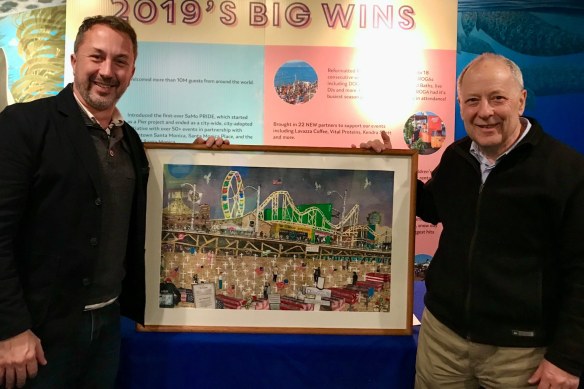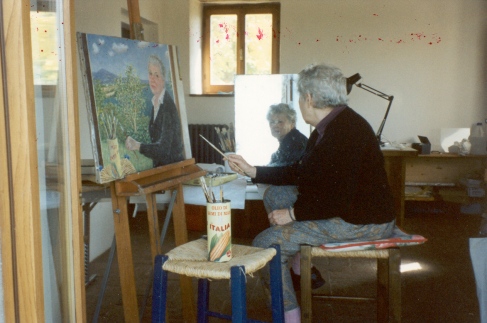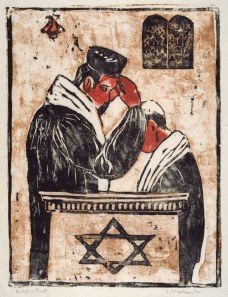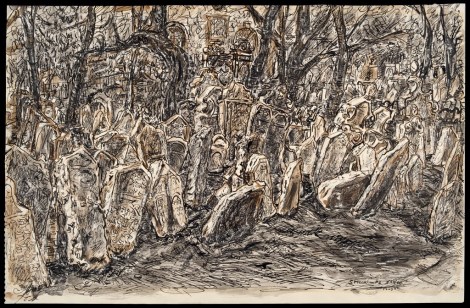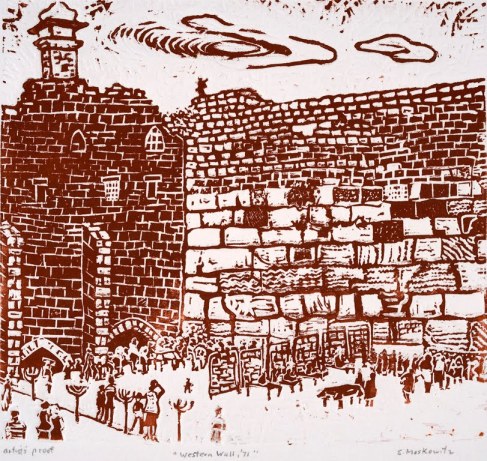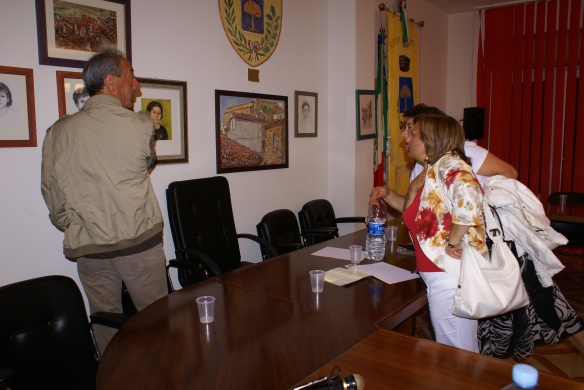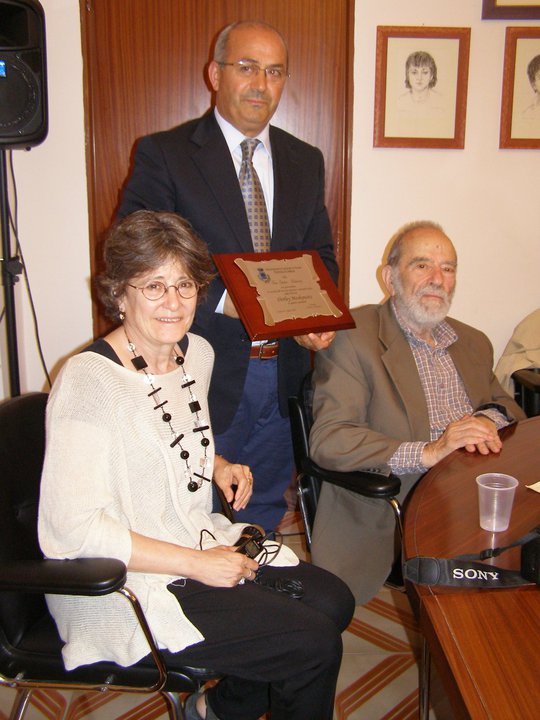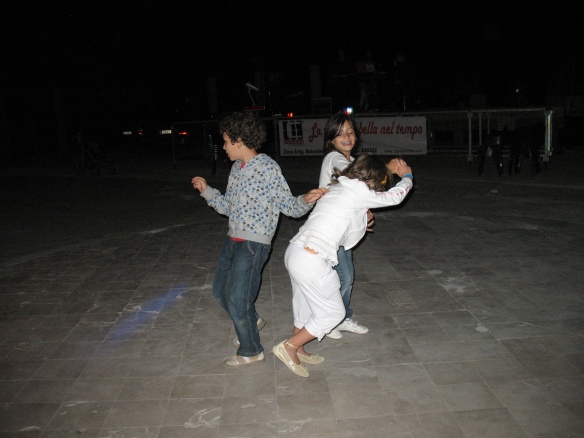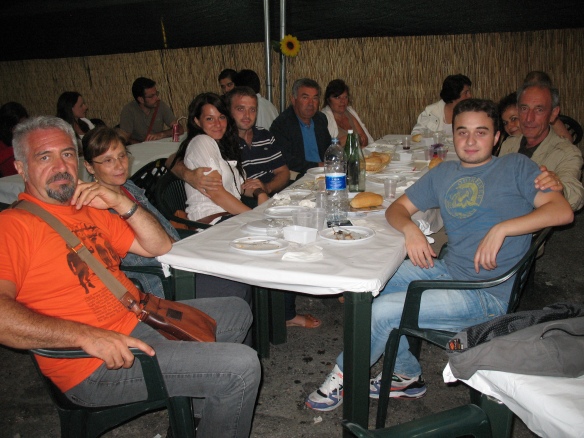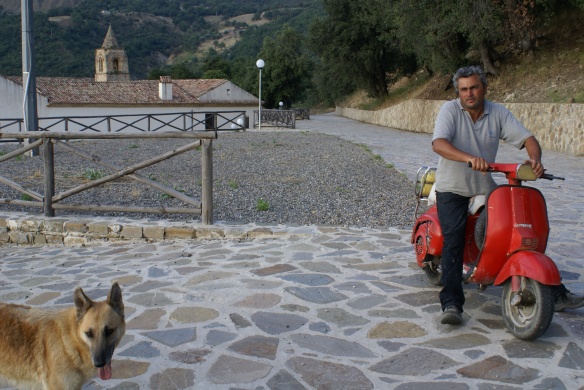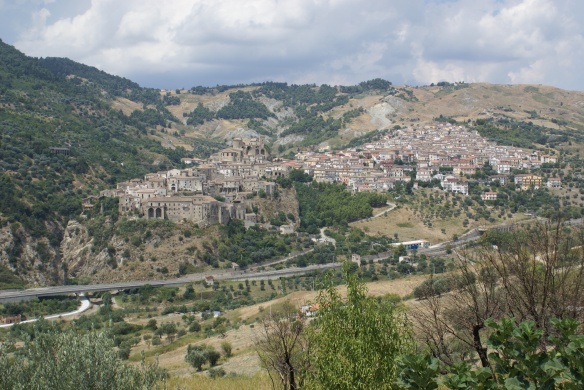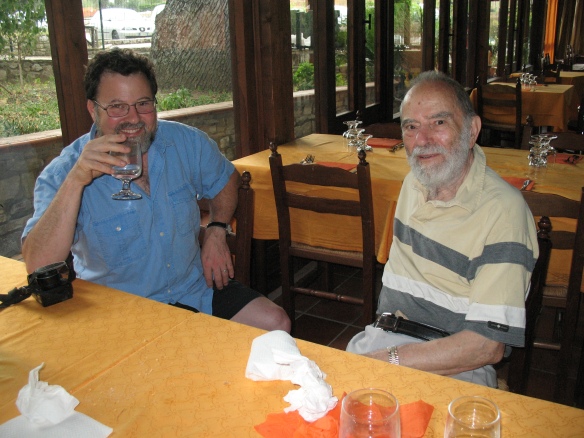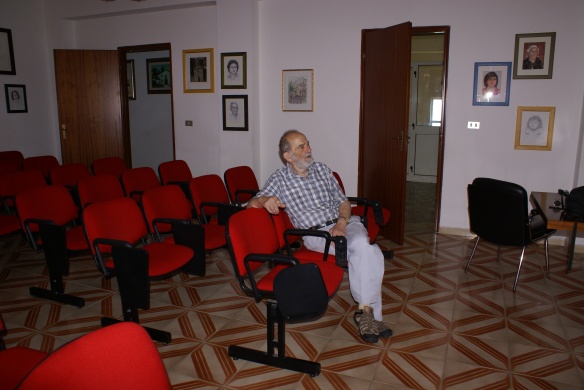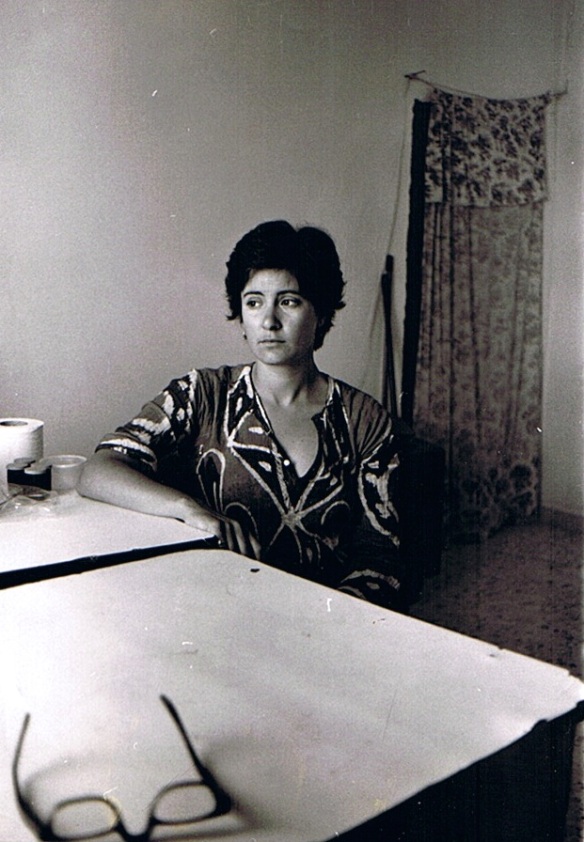By Ruth Ellen Gruber
The following article appeared in the Philadelphia Jewish Exponent on Sept. 23, but I forgot to post it here!
Italian Village Honors Work of Philly Artist
September 23, 2010
Ruth Ellen Gruber
Jewish Exponent Feature
NOCARA, Italy
 |
| Shirley Moskowitz |
During the 1970s and ’80s, my parents spent considerable chunks of time in southern Italy, documenting local life in Nocara, a wind-swept Calabrian village that clings to the crest of a half-mile-high hill overlooking the Gulf of Taranto.
My father, Jacob W. Gruber, was an anthropologist at Temple University, and was there to carry out an ethnographic study. He visited peasant homes and observed local events, interviewed and photographed people, and took reams of notes about local customs, traditions and beliefs.
My mother, the artist Shirley Moskowitz, recorded village life her own way.
Setting up her easel in odd corners of the town, she painted dozens of landscapes, townscapes and portraits that keenly captured both the harshness of the sunbaked uplands and the living face of a village that was just emerging from an age-old traditional lifestyle into modernity.
My mother died in 2007.
This past August, on what would have been her 90th birthday, Nocara honored her memory and her creativity by opening a permanent exhibit of some 40 of her artworks in the main chamber of the local town hall.
My father, who is now 89, and my brother, Sam, flew to Italy, and together we drove eight hours south from my home in Umbria to be guests of honor at the opening ceremony.
As we walked through Nocara’s narrow streets, Dad was accosted by villagers who remembered “il professore” and my mother from the old days. Some of them now are middle-aged adults whose likenesses my mother had drawn when they were children.
Many angles of town leaped out at us as if from one of Mom’s paintings: a rough stone archway, the flat face of a chapel in its little piazza, steep stone lanes and tiled roofs.
Much has changed, of course. Pigs no longer graze in Nocara’s streets, as I recall seeing them do when I visited my parents there decades ago. And donkeys are no longer a major means of transport. Moreover, Nocara now has gas, running water and other modern utilities, including Internet access.
A Posthumous Thanks
“Shirley Moskowitz’s paintings represent a piece of Nocara, at a special time in its history,” Mayor Franco Trebisacce told the several dozen people who attended the ceremony. “We have an obligation to display them here, and to offer our posthumous thanks to an artist who loved this town, and to her family.”
 |
| Synagogue collage by artist Shirley Moskowitz |
The exhibit, in fact, was a long time coming.
My parents had donated Mom’s art works to Nocara a decade ago.
The gift had made headlines in local newspapers at the time, but the works were never permanently displayed, and for the past eight years or so they had languished in storage, almost forgotten.
Mayor Trebisacce, who came to office last year, remembered them, however, and became curious about their fate. Earlier this summer, he and his aides found them in a closet, packed away in their original shipping case.
A Google search took them to the Web site that my family had created about my mother’s art after her death — shirleymoskowitz.wordpress.com — and they contacted us by leaving a comment on the site.
Many of the works that Mom donated to Nocara had already been exhibited at several major shows in Philadelphia, including a landmark retrospective at the University of the Arts in 1996 that had showcased more than half-a-century of my mother’s life in art.
Her work encompassed a variety of media — from simple line drawings and sketches to sculpture, oils and the joyously complex, multilayered collages that, since the 1960s, had become her signature style.
Some of her paintings and drawings now on display in Nocara, in fact, formed the basis of several of her major collages, such as “Wedding Procession,” dating from 1988.
Looking back, Mom was an intensely Jewish artist, but not a “Jewish artist,” per se.
She never created Jewish ritual art, though she frequently turned to Jewish themes and subject matter.
One of her first sculptures, dating from 1942, is a study of a huddled man and woman called “Refugees,” and other sculptures, prints and paintings depict a cantor, a rabbi, Jewish holidays and life-cycle events, even a solemn moment from the Aleinu prayer.
A collage she created as a sort of multi-textured self-portrait prominently included Shabbat candlesticks, even though she herself was not observant.
And following a trip she took with me in Eastern Europe in 1992, she produced a particularly powerful series of monotype prints of some of the ruined synagogues and Jewish cemeteries that we visited.
But these — like her Judaism itself — were all part of the much broader kaleidoscope of her life. Her work, in fact, embraced and reflected the wide variety of landscapes, friends, family and experiences that made up her world.
Her collages in particular mixed dreams and reality to project a richly textured vision of life as she lived and perceived it, among her family, friends, neighbors and the local environment.
As she once put it, they were based “on personal experience and are composed to affect the viewer from a distance while at the same time inviting him to participate in the action — to experience through color, dynamic contrasts of light and dark, and various techniques, a reality that may seem fantastic but is still real.”
